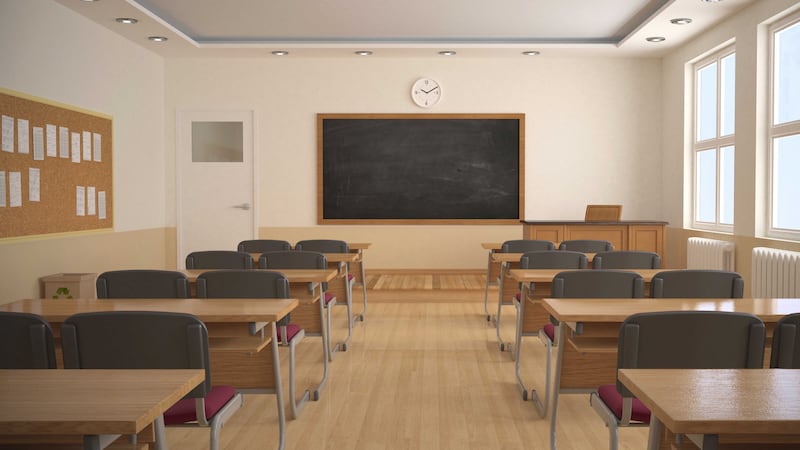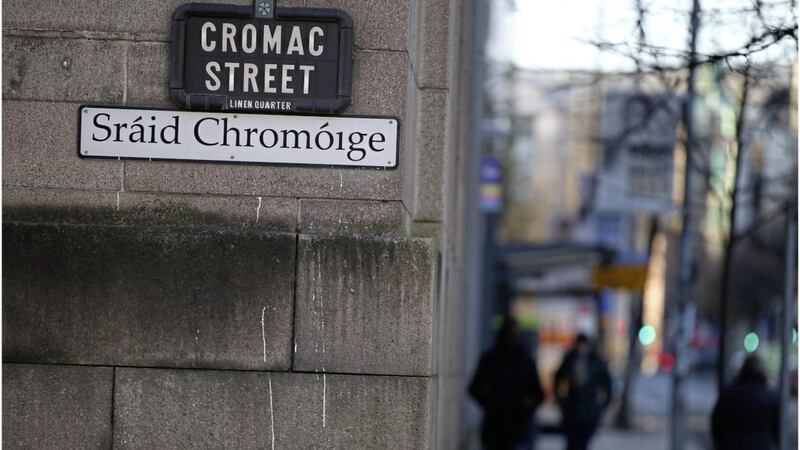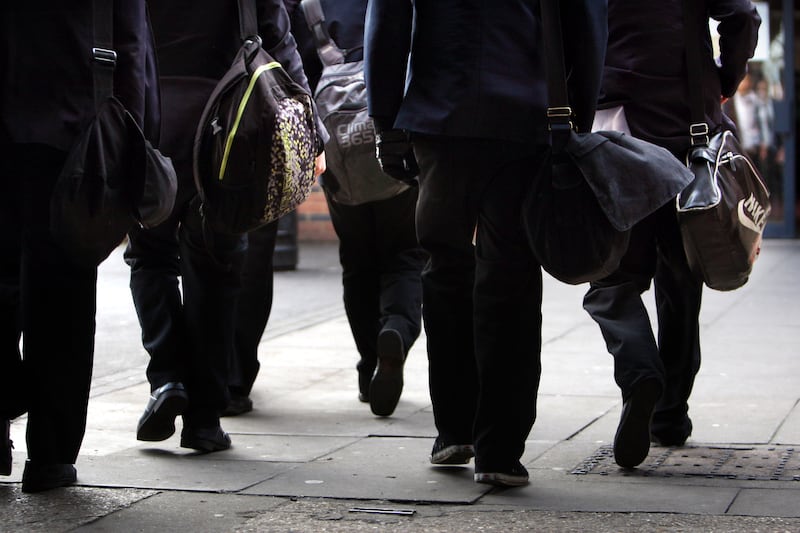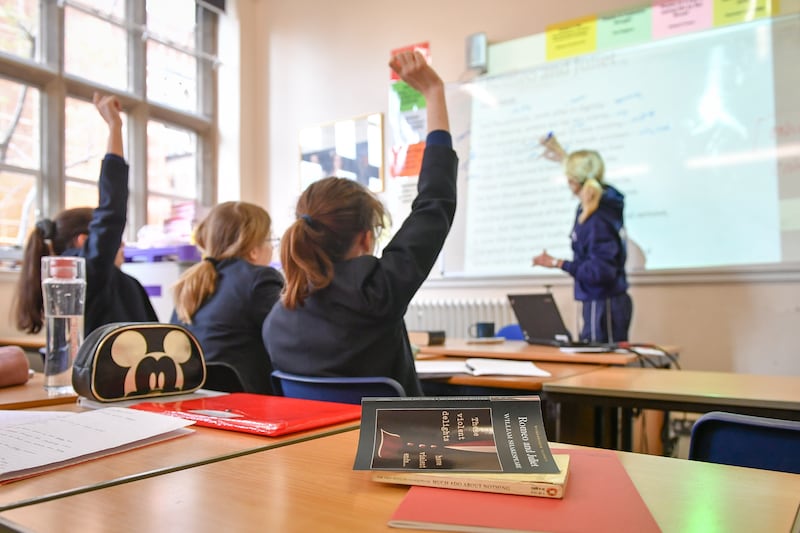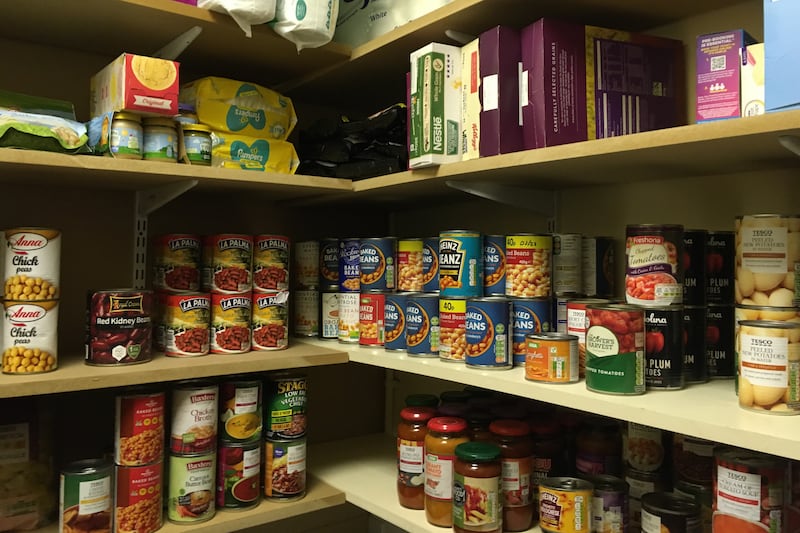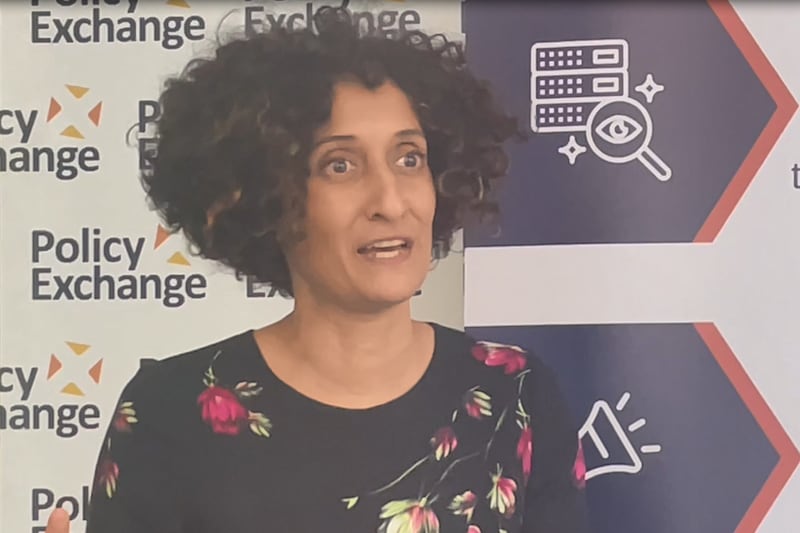TWO schools in Co Fermanagh have topped the Northern Ireland non-grammar school exams performance list after achieving their best ever GCSE results.
St Eugene's College in Roslea and St Comhghall's College in Lisnaskea occupy the top two spots.
However, their joy is to be short-lived as the education minister has said the pair will close and be replaced by a new college.

Grammar school exam performance

Non-grammar school exam performance
Today, the Irish News publishes its annual non-grammar performance list, which features the 50 schools with the highest proportion of pupils achieving five or more GCSEs at grades A* to C including English and maths.
Improving literacy and numeracy is a key aim of the Executive's Programme for Government. The aim is to increase the overall proportion of pupils with at least five GCSEs at A*-C, including GCSEs in maths and English, by the time they leave school.
The list does not intend to suggest that one school is better than another, or that academic performance should be the sole criterion for judging the quality of education on offer.
However, it has been argued that schools can usefully be compared on the basis of exam performance.
Both St Eugene's and St Comhghall's in rural Co Fermanagh will both be closed within months. A new 650-pupil school will open in Lisnaskea with the closure of the two schools.
At St Eugene's, there has been a significant improvement in the last two years.
In 2014/15, 87 per cent of pupils achieved five or more good GCSEs including English and maths - up from 78 per cent in 2013/14, and just 24 per cent in 2012/13.
"This has been achieved as a result of a lot of hard work from staff, pupils and taking on board recommendations of the ETI, the board, the CCMS , to improve outcomes. If you are willing to take on board advice, and really work at it, it will be worthwhile in the long run," said principal Martin Knox.
"I am delighted to see our children do so well and would like to think we are a driving force and an important force in their lives. Whatever the future holds, we want to play an important role."
Numbers taking exams at Roslea were significantly smaller than many other schools - 20 entered GCSEs last year. Overall, numbers have been in decline given the uncertainty over the school's future.
"We still have the same range of abilities. With smaller numbers, one child can made a difference," Mr Knox added.
At St Comhghall's in Lisnaskea, principal Gary Kelly said improvement over the last few years was due to various interventions including reading recovery. Pupils are also provided with their own iPads for free.
"Our results have improved over the last seven years. We have had a whole school focus on English and Maths from Key Stage 3 to Key Stage 4 and this is having a massive impact on our GCSE results," he said.
"Our school has a free school meal percentage of 52 per cent, which demonstrates that high levels of social disadvantage does not mean a child can't achieve outstanding results."
Last year's table toppers, St Patrick's in Keady, are in third on this year's list, even though the school produced record-breaking results.
"We improved which was amazing because people thought we would never reach 80 per cent again," principal Pat McGuckian said.
"The story for us is our boys are now achieving commensurate to our girls. There was a bigger differential in our school than the differential across Northern Ireland, so we worked on bringing the boys up."
The Department of Education said examination data should not provide a valid basis for comparing performance between schools.
"It takes no account of intakes of the schools or of any other factors that may affect pupil performance," a spokeswoman said.
"No single measurement can constitute a fair or accurate evaluation of a school, but should be considered in the context of other information about a school and its pupils; these data should be interpreted in that light."
:::
THE exam performance of dozens of schools is worse now than before they received millions of pounds to improve the grades of struggling pupils.
Grades slumped at one in five schools that benefited from a literacy and numeracy drive aimed at the 'poorest' children.
The Delivering Social Change Signature Project was described by teachers as the "best initiative in recent years".
It ran in the 2013/14 and 2014/15 academic years before it was wound up.
Teachers and politicians have called for it to be re-instated after GCSE results improved dramatically overall.
The proportion of children on free school meals achieving at least five good GCSEs, including English and maths, increased by 11.7 percentage points.
But a closer examination of the results of schools who took part shows there was little or no improvement at many, and for some fewer pupils are now reaching the expected standard.
A school-by-school breakdown obtained by the Irish News revealed that the proportion achieving the five or more GCSEs, including English and maths, slumped at about one in five of the schools who took part.
At Malone Integrated College, the overall pass rate fell from 18.8 to 13.7 per cent, but principal Maire Thompson said the grades of target pupils improved through the scheme.
"The signature project for us in Malone College was a fantastic intervention programme for our students," she said.
"The largest benefit we saw was in the students' attitudes to school and work - they had a belief that they could achieve more, because they had someone else there to support them and to offer them the extra help they needed.
"The signature teachers were able to offer much-needed support to a targeted intervention group to assist with their individual progress.We targeted students using indicators of social deprivation such as the pupils' FSME, refugee status and Protestant working class boys."
Little Flower Girls' School in north Belfast was among the schools to enjoy significant improvement.
There, the proportion achieving five or more top GCSEs including English and maths jumped from 31.6 to 47 per cent.
Principal Jim McKeever said: "The only show in town as far as the Department of Education is concerned is five or more GCSEs including English and maths. Our headline there is a dramatic rise and it is due to focussed interventions and incredible work," Mr McKeever said.
"Signature project worked but it was more than that. We used it to provide a lot of after school work and children flocked to it. The appetite for success was there," he said.
"It was a good idea and it worked."
::
GRAMMAR SCHOOLS
FOR the third year in a row St Dominic's Grammar School in west Belfast has produced the best A-level results.
The Irish News performance lists are now anticipated annually and some schools advertise their positions on their websites.
Achieving three or more A-levels at grades A* to C is considered a reasonable expectation of grammar pupils, especially as most are geared towards taking these exams.
Using newly published statistics for the 2014/15 academic year, The Irish News today lists the proportion of pupils at schools achieving that mark.
The list does not intend to suggest that one school is better than another, or that academic performance should be the sole criterion for judging the quality of education on offer.
However, it has been argued that grammars can usefully be compared on the basis of exam performance.
St Dominic's Grammar School in Belfast is again the top-performing grammar. An all-girls' school on the Falls Road with 1,000 pupils, its A-level results have been improving steadily over the last decade.
St Dominic's serves an area of significant deprivation and has one of the highest proportions of pupils entitled to free schools meals (FSM) - the most common measure of social disadvantage in schools - in the grammar sector.
Free lunches are usually provided to children whose parents receive benefits or whose family income is less than £16,190.
Schools with high numbers of FSM children typically do not do as well in public exams as those in richer areas.
Principal Carol McCann said she was delighted that, once again, the girls of St Dominic's had achieved very highly at A-level.
"Credit must go to the staff and pupils who worked so hard to achieve excellent grades at A2. The girls have a great desire to achieve and the drive to make it happen. They are aware of the very difficult economic situation and realise that they are in a very competitive market for both university places and ultimately in the work place," Ms McCann said.
"A number of girls were especially pleased to achieve the highest mark at A-level in Northern Ireland. Additionally, a number of girls were awarded prestigious bursaries including a JP McManus Scholarship, a Queen's Scholarship Award, a McAleese Scholarship and SK Chin Scholarship. These scholarships will provide great assistance in relation to their university fees and indeed in some cases will cover the costs.
"While the girls work very hard to achieve top grades, they also manage to develop themselves well beyond the classroom, excelling in sport, drama and music. They are fortunate also in having parents who are very committed to their education and who work in close partnership with the school always."
